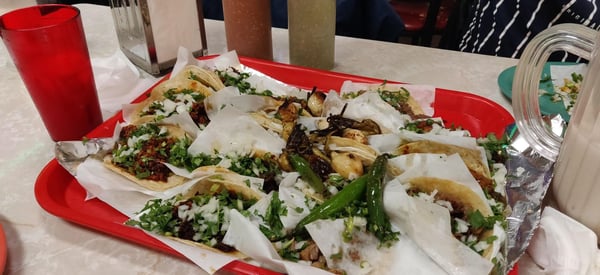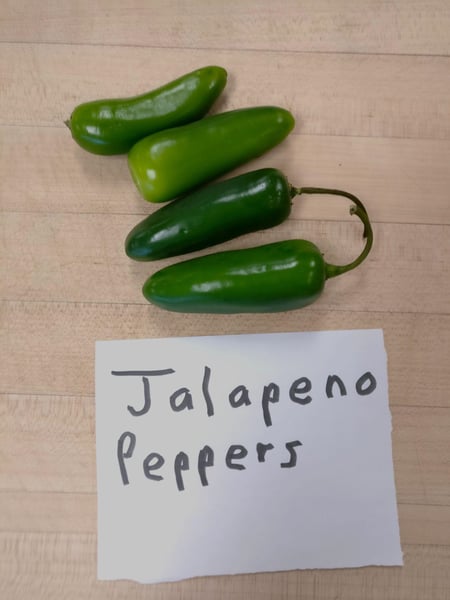Despite its relatively simple appearance, there are centuries of tradition and unique flavor combinations packed into a simple Mexican dish. From endless varieties of fresh and dried chilies like arbol, jalapeno, habanero and guajillo, to endless spices and herbs like cumin, cilantro, all spice, garlic and cinnamon, Mexican cuisine is unique in its flavor profile. It’s bold as brass while also utilizing tons of ingredients with minimal waste.

The first time I actually had pozole wasn’t until a few years ago when I was working in a kitchen and they were serving pozole as a brunch soup. I was a little confused because this restaurant wasn’t much of a Mexican restaurant, it definitely leaned more into its American roots for the cuisine. But nonetheless, since I would work brunch service every weekend for seven months straight, it was only natural that I would end up trying the pozole.
Pozole is a soup that combines the slow cooking process of braising with a variety of chilies to produce a soup that takes on the deep profiles present in the chiles. Some may classify the soup as smoky, spicy, chocolatey, sweet, earthy. Really it all comes down to the variety of chiles you use in the soup. This soup can also come in a variety of colors, ranging from red to green or even white. Once again, the different in color of the soup comes from the chilies used. Red pozole uses dried chiles, green pozole uses green chiles, and white pozole surprisingly uses no chiles.
As you can see, the biggest driving factor in how the pozole will come out, is the chiles you use in it. After telling you that this dish is built primarily on the chiles used, don’t be worried that it’ll burn your tongue off. Many chiles are actually more complex in flavor than just being spicy, particularly dried chiles.
- Guajillo chiles are sweet with some acidity and a mild heat
- Puya chiles are like guajillo but slightly spicier and have a fruity and earthy aspect to them
- Chipotle chiles have that iconic smoky flavor they are known for.
- Chiles de Arbol have a nutty flavor to them and are very spicy.
- Pequin sit in a nice sweet spot of being smoky, fruity and spicy.
- Anchos are like Pequin chiles but less spicy and heavier on the fruit flavor.
- Chiles Negros are strong with their earthy flavors while having a mild heat to them and a dried fruit sweetness as well.

Though chiles are the main star of pozole when it comes to flavor, there are a few other ingredients that are important such as:
- Pork
- Hominy
- Garlic
- Stock
- Cumin
With the combination of these other ingredients, you get a soup that’s to die for. I feel like of the ingredients above, the pork and hominy are the two most important for providing body to the soup.
Having such a hearty soup, you’ll need to balance it out with some garnishes. It’s very typical to find that this soup has more garnishes on top than it seems like ingredients in the soup. Worry not though, very much like ramen, all the garnishes help to make the soup better. Classic toppings include:
- Fried tortilla strips
- Sliced green cabbage
- Sour cream
- Diced avocado
- Radishes
- Diced white onions
- Lime wedge
- Fresh cilantro
- Salsa
Feel free to mix it match to your preference, it’s really hard to go wrong with any combo of these garnishes to pozole. Below you’ll find a personal recipe that I use to make pozole.
Pozole
Scroll down for a printable version of this recipe
Makes: 4 quarts or 8 servings
Prep time: 30 minutes
Cook time: 3 hours
Inactive time: 20 minutes
Total time: about 4 hours
2 Tablespoons grapeseed oil
2 pounds pork loin, cut into 2-inch cubes
1 yellow onion, small dice
3 Tablespoons garlic, minced
1.5 Tablespoons Recado Rojo (red achiote paste)
1.5 Tablespoons Gochugaru (Korean chili powder)
1 quart chile puree (see instructions below)
2 teaspoons smoked paprika
1 Tablespoon cumin
2.5 quart chicken stock
3 15.5 oz cans white hominy
Salt, to taste
Garnishes:
Fried tortilla strips
Sliced green cabbage
Sour cream
Diced avocado
Radishes
Diced white onions
Lime wedge
Fresh cilantro
Salsa
For Chile Puree:
Rehydrate (soak in hot water for 20 minutes) 4 ounces Guajillo/Ancho chilies with small amount of smoked chipotle and Arbol chilies for heat. Puree in a blender.
For Pozole:
1. Heat grapeseed oil in large skillet. Sear pork and set aside.
2. In the same pan, cook onions until slightly translucent. Add garlic, recado rojo and gochugaru.
3. Add in chile puree and seasonings.
4. Add pork back into pot with chicken stock and braise for 3 hours or until pork is fork tender.
5. Add hominy and season to taste with salt.
6. Garnish with your choice of toppings.
If you want to cook pozole at home soon, check out our Virtual Cook Along: Pozole Rojo and Corn Tortilla Workshop on February 26, 2023 at 11am CST. This class will take you along for the ride in your own home as you learn more about pozole and how to properly cook it.
Pozole
Ingredients
- 4 ounces combination of dried Guajillo/Ancho chilies with a small amount of smoked chipotle and Arbol chilies
- 2 Tablespoons grapeseed oil
- 2 pounds pork loin, cut into 2-inch cubes
- 1 yellow onion, small dice
- 3 Tablespoons garlic, minced
- 1.5 Tablespoons Recado Rojo (red achiote paste)
- 1.5 Tablespoons Gochugaru (Korean chili powder)
- 1 quart chile puree (see instructions below)
- 2 teaspoons smoked paprika
- 1 Tablespoon cumin
- 2.5 quart chicken stock
- 3 15.5 oz cans white hominy
- Salt, to taste
- Fried tortilla strips
- Sliced green cabbage
- Sour cream
- Diced avocado
- Radishes
- Diced white onions
- Lime wedge
- Fresh cilantro
- Salsa
Instructions
- Soak the dried chiles in hot water for 20 minutes. Puree in a blender.
- Heat grapeseed oil in large skillet. Sear pork and set aside.
- In the same pan, cook onions until slightly translucent. Add garlic, recado rojo and gochugaru.
- Add in chile puree and seasonings.
- Add pork back into pot with chicken stock and braise for 3 hours or until pork is fork tender.
- Add hominy and season to taste with salt.
- Garnish with your choice of toppings.
